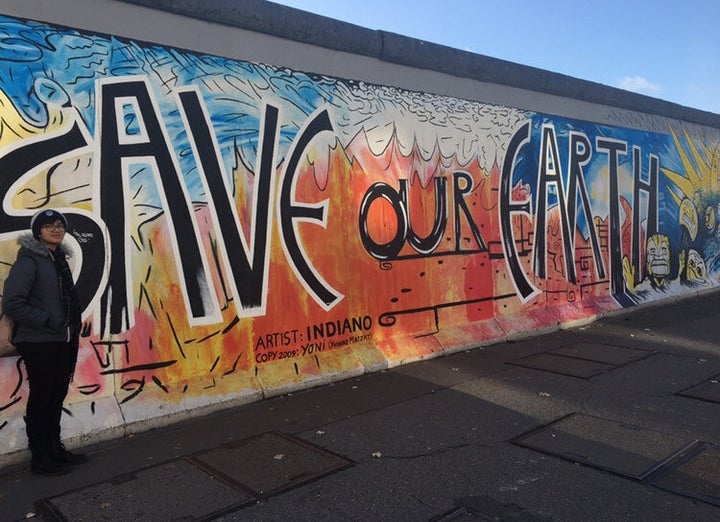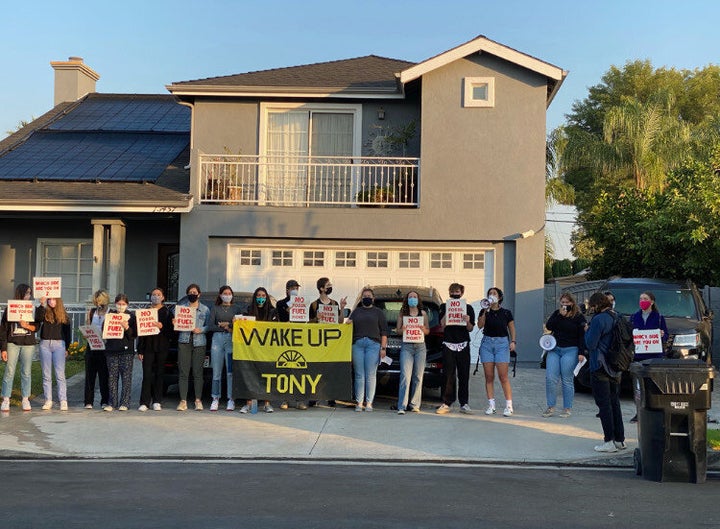
As I sit down to write this, there are 9 years, 99 days, 7 hours, 28 minutes, and 51 seconds until the effects of climate change will be irreversible. There will be less than that by the time this article is published. Based on a United Nations projected deadline, this statistic is the first thing you see when visiting the website for Zero Hour, one of countless youth-led groups fighting tirelessly for climate justice.
The image of a ticking clock perfectly encapsulates the feeling of watching the Earth hurdle further and further toward environmental damage, species extinction and ever-worsening weather disasters, while those in power do as little as possible to stop it. That feeling is what inspired me to take part in youth climate protests earlier this year.
At school, some friends and I began recruiting our classmates to join a massive Los Angeles youth climate strike on Earth Day, April 22. As we slowly collected student pledges to protest and carefully formed our action plan, I was positive we would make a big impact, not only in our school but in our country as a whole.
But then came COVID-19 and statewide lockdowns.
My first true entrance into the world of youth climate activism happened under quarantine. I joined the Sunrise Movement, a climate justice organization, and discovered what activism looks and feels like in the digital world. For the first precarious weeks of lockdown, my experience was mostly dozens of Zoom trainings, ultimately leading to direct action: phone banking for environmentally progressive political candidates.
“Social distancing has taken away the in-person socialization that makes slow, extensive activism work feel rewarding and inspiring — being able to talk to other activists is difficult to replicate on a buffering Zoom screen.”
While I was excited to finally make an impact, I found that spending hours on the phone during my summer vacation asking very irritable Coloradans to elect green candidates was both nerve-wracking and not immediately rewarding. It became hard to stay motivated or particularly hopeful for the future. It was harder to motivate even my closest friends to help me. The response I often got was that there is nothing big enough we can do, and that the ticking clock for climate change has practically already run out.
The overwhelming nature of the climate crisis, and how helpless it can make you feel as just one person, caused me to experience burnout after a few months. Social distancing has also taken away the in-person socialization that makes slow, extensive activism work feel rewarding and inspiring — being able to talk to other activists is difficult to replicate on a buffering Zoom screen.
My limited human connection makes it difficult to feel inspired. Meanwhile, the effects of climate change are destroying the planet around us right now. Here in California, waking up to skies full of yellow smoke due to our ongoing wildfires felt like a reminder to me that, if we aren’t careful, our planet can actually be irreparably damaged.
That grim realization — the thought of our forests, our wildlife, and our environment truly being destroyed — is an emotional phenomenon which goes by many names, my favorite of which is “climate grief,” because of how it correlates to stages of grief: denial and anger followed by despair and acceptance. I understand how feeling depressed about the end of the world can make people feel there’s nothing we can do to avoid climate disaster — and then decide to do nothing.
There are absolutely things, though, that we can do, like rapidly reducing emissions. So, the hopeless idea that the fight is already over is not logical. But then again, neither is grief.
Coping with anxiety or even apathy over the environment starts with acknowledging our feelings and connecting with other people who might feel the same way. The next step is realizing that no single person can end climate change — not every activist is a carbon-zero vegan cyclist, nor do they have to be — and that there is a place for everyone when it comes to climate activism. Whether you’re volunteering, using art to educate others or even just voting, you are part of the work.

I had to step away from phone banking and Zoom meetings once I felt burnt out. It was not until after I took time away to work on things I enjoy, creative writing and spending more time with my family, that I was able to start becoming truly active in the climate fight.
When I got involved with my local Sunrise hub again, I avoided fatigue by finding forms of activism that fit my interests: working with the press and communications. I’ve helped organize demonstrations and events in my area, and I’m even able to phone bank now without becoming as much of a nervous wreck as I did earlier in quarantine.
Sometimes it helps to remember that small changes can make a huge difference: In the past, peaceful protests that actively engaged just 3.5% of their populations have consistently brought change, a statistic that has inspired climate movements like Extinction Rebellion. Youth-led climate movements are having results. Sunrise brought the Green New Deal to the forefront of political discussions, and in this year’s Democratic primaries it helped elect progressive climate candidates like Cori Bush in Missouri, Jamaal Bowman in New York, Mike Siegel in Texas, and other staunch Green New Deal supporters.
Despite my initial hopes to take part in huge protests to make an impact, I ultimately found inspiration and hope in smaller, local activism. Even as it becomes easier to feel helpless during such a chaotic time, the fight for climate action and justice remains a fight in which the actions of every individual taking part matters. As the late Ruth Bader Ginsburg said, real change happens one step at a time. I’ll keep taking those steps — whether out on the pavement, or inside on a screen — for the next 9 years, 99 days and 7 hours or so. I hope you’ll join me.
Do you have a compelling personal story you’d like to see published on HuffPost? Find out what we’re looking for here and send us a pitch!
For more content and to be part of the “This New World” community, follow our Facebook page.
HuffPost’s “This New World” series is funded by Partners for a New Economy and the Kendeda Fund. All content is editorially independent, with no influence or input from the foundations. If you have an idea or tip for the editorial series, send an email to thisnewworld@huffpost.com.
